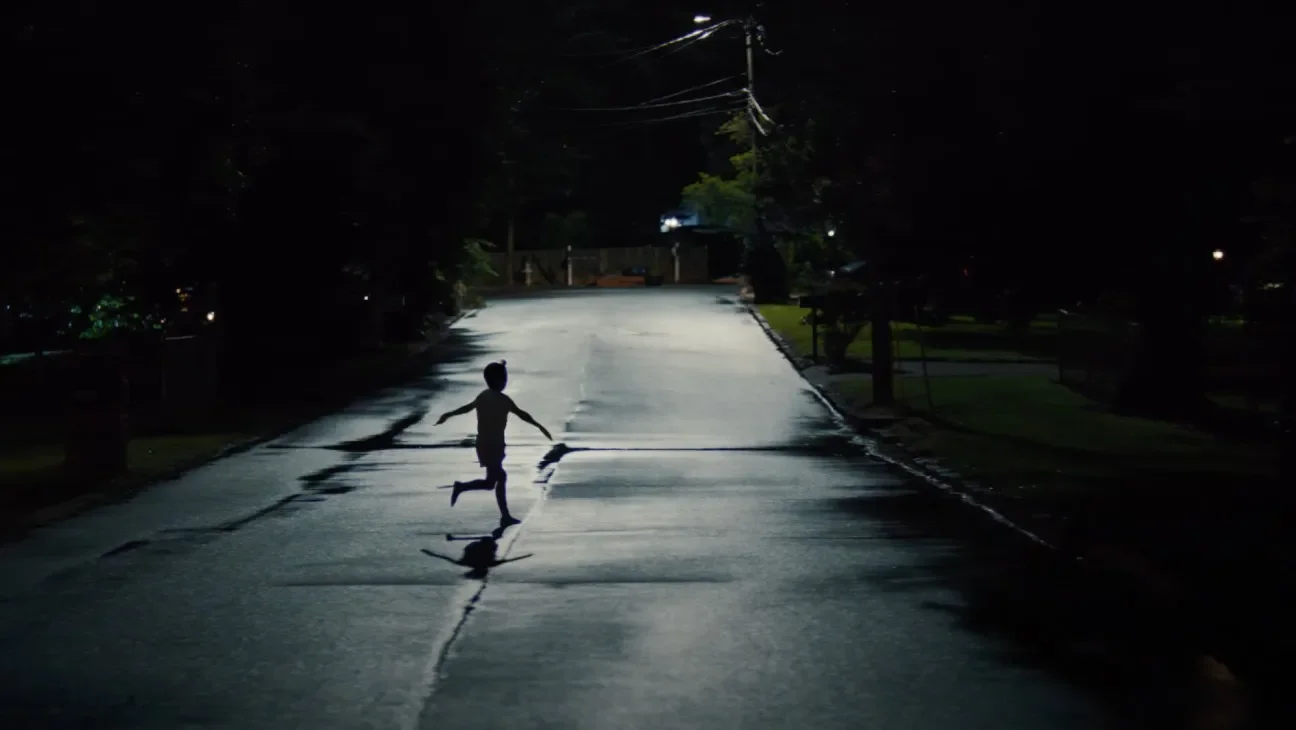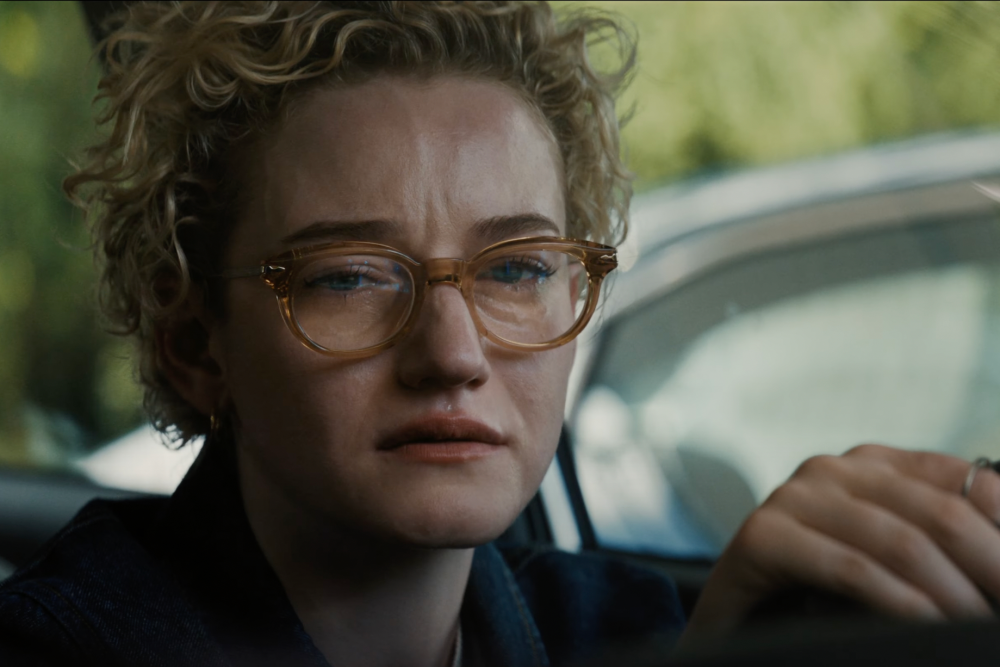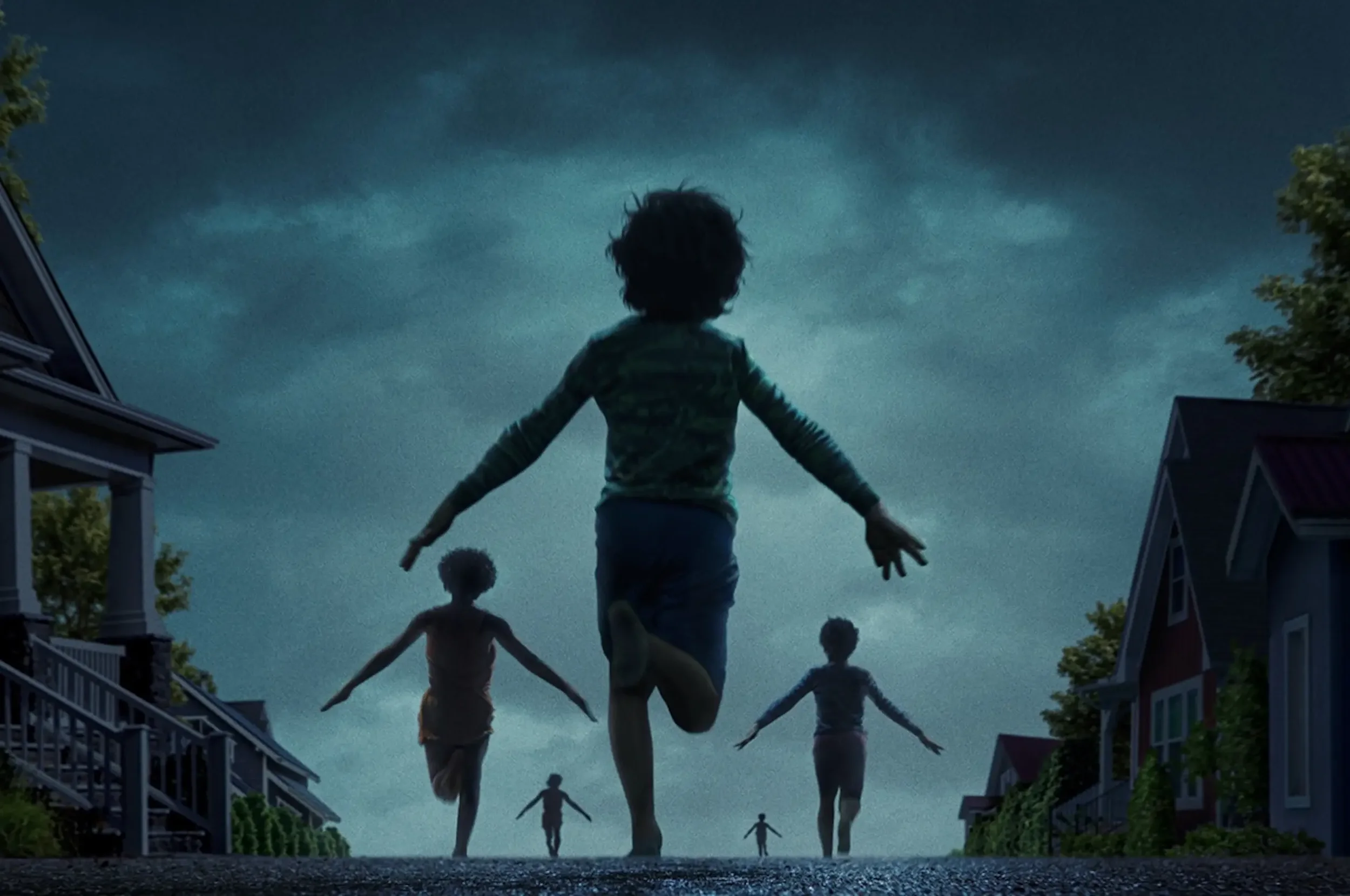Specters of Queerness in “Weapons” (2025)
17 schoolchildren from Ms. Gandy’s third-grade class simultaneously vanish one night in Weapons (2025), directed by Zach Creggers. Fleeing their homes in an identical manner at 2:17 am, the children never return, which plunges their nondescript suburb into chaos. Only one student from the class remains: Alex Lilly. His beautiful colonial home falls into increasing disrepair throughout the film, its garden overgrown, interior dark and cluttered, and windows coated with newspaper. This dilapidation draws suspicions from Ms. Gandy.
The house shifts from an image of idyllic Americana to an ominous epicenter of missing children, acting as a potent symbol of Weapons’ layered criticism. Through its story of shattered households and stolen childhoods, the film questions how violence and care intersect in the family unit.
The source of the disappearance is revealed when Gladys Lilly, Alex’s eclectic aunt, waltzes on screen. In a meeting with the school’s principal, Marcus, she describes herself as an older caretaker stepping in for Alex’s sick parents. She is soon shown to be a witch who parasitically inhabits her victims through blood magic. Her victims include not only Alex’s parents but also his classmates, who become empty husks in the house’s basement.
When Gladys first enters Alex’s household, she is the ill one, not the boy’s parents. Upon her arrival, they tell Alex that Gladys is a long lost relative, dying from cancer and in need of hospice care. However, she hypnotizes the couple the next day, leaving them entranced and unable to look after themselves. Familial roles in the household become reversed: the child becomes the caretaker. Alex must feed his parents Campbell’s soup each night as per Gladys’s demands. He sustains his parents, who sustain Gladys. Kinship becomes an obligation onto younger generations, maintained through parasitism.
Gladys’s invasion of the suburban home literalizes the violence of the family. Its private interior hidden from public view by newspaper, the home becomes a secluded site where manipulated youth are kept captive and stagnant. Blood, the fluid embodiment of genetic connection, drives such exploitation.
Interestingly, Gladys herself does not hold a heteronormative identity. She is an unmarried older woman with unusual sensibilities. Her first appearance on screen, in her meeting with Marcus, is pure camp: she wears shellacked makeup on her face, a coiffed orange bob, and gaudy clothes from the 1970s. She speaks through dated vocabulary, explaining that Alex’s parents are suffering from “consumption.” Her self-expression is an absurd cacophony of various styles and periods, straying from traditional conceptions of femininity.
In later scenes, Gladys’s appearance fluctuates greatly. Around the Lilly household, she sheds her wig and makeup, opting instead for Norma Desmond-esque robes and headscarves. In one nightmare sequence she poses as a freakish, smiling clown in the bed of a missing child; in another, she masquerades as Alex himself. Bending time, gender, and age, Gladys’s identity is characterized by queer multiplicity.
Alex is similarly coded as queer. Prior to his classmates’ disappearance, he is bullied by the other boys, framed as an outcast. His presentation as Gladys’s uncanny double further reinforces his outsider nature. As stated previously, Gladys appears as Alex in a dream sequence; additionally, Alex is the only person in Gladys’s direct orbit spared from her parasitism so that he can complete tasks for her. In many ways, the two operate as a duo. Alex, then, is the only character besides Gladys capable of performing blood magic. In fact, the film ends when he completes his own ritual, propelling his classmates to chase after Gladys and viciously rip her body apart. Having turned her witchcraft against her, Alex inherits a monstrous, feminine magic, and the tormented queer child thus becomes a weapon.
Weapons’ mixed messaging is delightfully complex. While the film unearths the hidden violence of the family unit, it also casts a queer witch as the apparition behind such violence. This depiction of gender and social dynamics is contradictory; even the film’s queer characters seem to operate within the heteronormative structures that harm them.
The fate of Weapons’ one gay couple, Marcus and his husband, exemplifies this fact. The two are shown shopping for groceries as a couple, wearing matching Mickey Mouse T-shirts, and eating a hot dog dinner together in front of the TV. Their relationship is depicted as ideal and decadent, and they are the only unbroken household in the entire film. Despite their gayness, the couple ultimately embraces heterosexual norms through their adherence to squarely American consumption habits.
Unfortunately, even their peaceful home is subject to Gladys’s witchy horrors, their heteronormative conformity unspared. When she stops by unannounced, she performs her blood magic in the kitchen, which compels Marcus to brutally murder his husband. The household, infiltrated by a monstrous woman, once again becomes a stage for violence.
Integrating queerness into the very structures it seeks to destabilize, Weapons refuses to indulge in any fantasy of an unblemished household. The film instead paints the family as an inescapable structure in which violence and care are intertwined and endlessly reproduced. There are no happy endings, just damaged childhoods.
Weapons was released on August 8, 2025 and is available in theaters.




